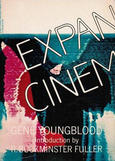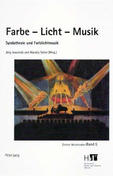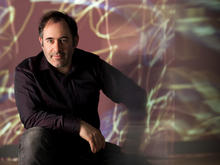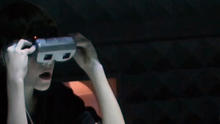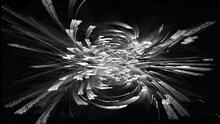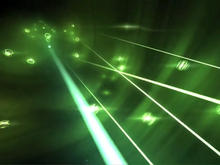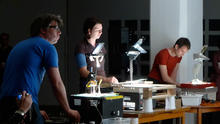Messa di Voce
(2003)by Golan Levin, Zachary Lieberman, Jaap Blonk, and Joan La Barbara augments the speech, shouts and songs produced by a pair of vocalists with real-time interactive visualizations.
The project touches on themes of abstract communication, synaesthetic relationships, cartoon language, and writing and scoring systems, within the context of a sophisticated, playful, and virtuosic audiovisual narrative. Custom software transforms every vocal nuance into correspondingly complex, subtly differentiated and highly expressive graphics. Messa di Voce lies at an intersection of human and technological performance extremes, melding the unpredictable spontaneity and extended vocal techniques of human improvisers with the latest in computer vision and speech analysis technologies. Utterly wordless, yet profoundly verbal, Messa di Voce is designed to provoke questions about the meaning and effects of speech sounds, speech acts, and the immersive environment of language.
Source: Golan Levin
In collaboration with fellow software artist Zachary Lieberman and singers/composers Jaap Blonk and Joan La Barbara, Golan Levin has created Messa di Voce, a new concert in which the speech, shouts and song of two abstract vocalists are complemented by corresponding live graphics. The show is part of Ultrasound 2003, Huddersfields international festival of experimental sound and electronic music.
Mickey Noonan: Please explain Messa di Voce in layman's terms.
Golan Levin: It means 'placing the voice'. It's a performance in which we are visualizing the speech and song of two singers with extended vocal techniques, in that they specialise in making unusual vocal sounds. The concept is they're singing, and, as they sing, it has been visualised behind them on a large screen.
Mickey Noonan: Right. And how do you do that exactly?
Golan Levin: We've written all the software that does the visualisation, which uses speech recognition technology. We know where the performers' heads are, so we can make the graphics appear to be emerging from them. We can change the colour or the shape or the texture of the graphics to correspond with the singing.
Mickey Noonan: So were you a software developer before embarking on this?
Golan Levin: No, I'm an artist.
Mickey Noonan: Did you have to gen up on computer programming?
Golan Levin: That's like asking a painter if they had to learn how to use paint. I think every artist has to do research into how to use their materials. The art here is software.
Mickey Noonan: Sorry.
Golan Levin: That's OK. We've had some problems getting press about the project because no one knows quite how to categorise it. Is it visual? Is it a music concert? We're well into the 21st century and we're ready for a new form of performance. Although, in a way, we've had it for 100 years and we've called it cinema - but this is live.
Source: Tmema
